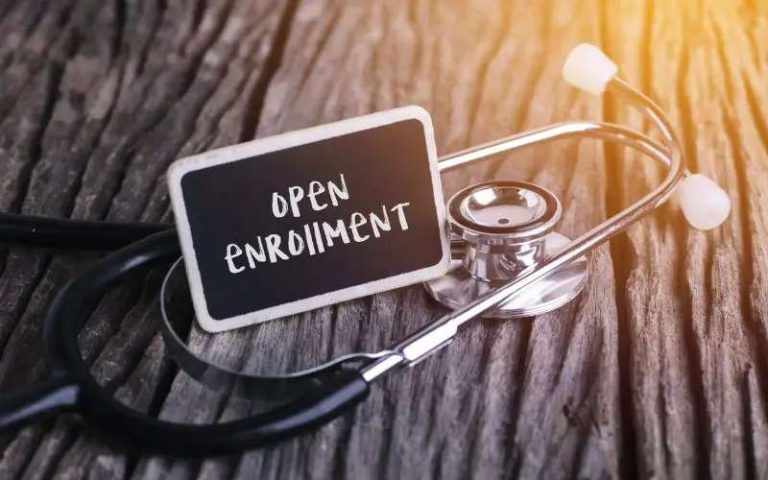When is open enrollment for health insurance 2023?
If you don’t get health insurance through an employer – the annual open enrollment period that runs from November 1 – December 15 each year (extended to Jan 15 for 2023 coverage) is the only time you can enroll in a comprehensive health plan and shop all the available options to find the best coverage for you.
- Open Enrollment Begins: Tuesday, November 1, 2022
- Open Enrollment Ends: Sunday, January 15, 2023
If you miss Open Enrollment, you may not be able to enroll in comprehensive coverage that qualifies for cost assistance and affordability protections under the ACA until the following year.
Ready to find your perfect plan?
Answer a few questions to have your custom quotes emailed directly to your inbox!
SEE MY PLANS >
Special Enrollment Period
Life circumstances may qualify you for a Special Enrollment Period – which would allow you to enroll in coverage or change a Marketplace health plan outside of the annual Open Enrollment Period.
Woligo can also help you during a Special Enrollment Period, some of which are:
- Changes in household such as you got married, had a baby, adopted a child, got divorced and lost health insurance, or if someone on your Marketplace plan dies.
- Changes in residence such as you moved to a new home in a new ZIP code or county, moved to the U.S. from a foreign country or United States territory, if you’re a student, moving to or from the place you attend school, you’re a seasonal worker, moving to or from the place you both live and work, moving to or from a shelter or other transitional housing.
- Changes in health insurance coverage such as you lost your health insurance, lost job-based coverage, lost individual health coverage for a plan or policy you bought yourself, lost eligibility for Medicaid or CHIP, or lost eligibility for Medicare.
- Other life circumstances that may qualify you for a Special Enrollment Period:
- Gaining membership in a federally recognized tribe or status as an Alaska Native Claims Settlement Act (ANCSA) Corporation shareholder
- Becoming newly eligible for Marketplace coverage because you became a U.S. citizen
- Leaving incarceration
- Starting or ending service as an AmeriCorps State and National, VISTA, or NCCC member
2022 Obamacare pricing
We won’t know what pricing will be for 2023 Marketplace plans until Open Enrollment begins on November 1. Plans and pricing also vary based on where you live. However, we can look at what impacted pricing for 2022 Marketplace plan coverage.
First off, it’s important to know that federal COVID legislation passed in 2021 helped make health insurance more affordable for 2022 coverage. Specifically, the American Rescue Plan Act included subsidies that lowered health care costs and expanded access to affordable, comprehensive health coverage for the 2021 and 2022 calendar years.
The enhanced premium tax subsidies were so effective that a record-breaking 14.5 million people signed up for health insurance coverage or were automatically re-enrolled through the federal Marketplace and State-Based Marketplaces during the 2022 Open Enrollment period.
According to the U.S. Department of Health and Human Services, the subsidies helped lower the cost of care by: 1
- Providing additional help with premiums for nearly 90 percent of the 14.5 million consumers that signed up for health coverage on the Health Insurance Marketplaces during the 2022 Open Enrollment Period
- Making help available, for the first time, to individuals with incomes around $52,000 and $106,000 for a family of four
As a result, on average, families were able to save $2,400 on their annual premiums and 4 out of 5 consumers found quality coverage for under $10 a month. 2
If you own your own business or are self-employed, please also our Ultimate Guide to Obamacare for Small Business Owners.
Expected increase for 2023 Marketplace individual health insurance
The Affordable Care Act (ACA), otherwise known as Obamacare, requires insurers to submit their rates to either the state or federal government for review if they are planning to significantly increase plan premiums. The rate review process ensures that experts evaluate whether the proposed rate increases are based on reasonable cost assumptions and solid evidence and gives consumers the chance to comment on proposed increases. 3
Insurers have been filing rate increase proposals across the country, with the average increase for 2023 coverage being about 10%. According to various insurers, these rate increases are necessary because they are expecting more people to visit doctors and schedule procedures that they previously delayed because of the pandemic. They also cite rising health care costs caused by inflation, labor costs and an expectation that some individuals will drop out of the marketplaces because subsidies for some groups of people will expire at the end of the year (more on this below). 4
Using the Rate Review Information tool on HealthCare.gov, it’s easy to view your state and see some of the rate increase proposals that have already been filed by some insurers. For example, in Oklahoma, the highest proposed rate increase at time of this publication is 15.91% for 2023 individual Marketplace plans, while in Texas, the highest proposed rate increase stands at 30.04%.
Ready to find your perfect plan?
Answer a few questions to have your custom quotes emailed directly to your inbox!
SEE MY PLANS >
Enhanced premium tax subsidies
The premium tax subsidies from the American Rescue Plan were a substantial savings for millions of Americans as we battled a global pandemic. These subsidies were set to expire on December 31, 2022 and would have caused detrimental effects if not renewed.
In April of 2022, the Urban Institute released projections for what could happen if the American Rescue Plan Act subsidies were not expanded. It concluded that if the enhanced premium tax credits expire: 5
- Nearly 3.1 million more people will be uninsured
- Individuals and families enrolled in the Marketplaces or other nongroup coverage will pay hundreds of dollars more per person each year in premiums
- People eligible for premium tax subsidies with incomes between 150 and 400 percent of federal poverty line would pay more than $1,000 more per person for a silver plan
- People with incomes above 400 percent of the federal poverty line who would lose their eligibility for premium tax subsidies would pay roughly $2,000 more per year
- The non-Hispanic Black population, young adults, and people with incomes between 138 – 400% of the federal poverty line will experience the largest coverage losses if the enhanced premium tax credits expire
Policy changes for the health sector
On August 16, 2022, President Biden signed the Inflation Reduction Act of 2022
Into law, effectively renewing the premium tax subsidies for three more years, amongst other things: 6
- Extend the enhanced premium tax credit subsidies created by the American Rescue Plan Act by three more years
- Limit seniors’ drug costs to $2,000 a year
- Cap insulin at $35 for diabetics enrolled in Medicare
The Inflation Reduction Act also includes provisions such as:
- $260 billion in clean-energy tax credits
- $80 billion in new rebates for electric vehicles, green energy at home and more
- $1.5 billion in rewards for cutting methane emissions
- $27 billion for a Clean Energy and Sustainability Accelerator or ‘green bank’
- Support for fossil fuel projects by mandating new oil and gas leasing in the Gulf of Mexico and off the coast of Alaska
- Support for coal miners with black lung by permanently extending funding for the Black Lung Disability Trust Fund
- $20 billion for agriculture subsidies to help farmers reduce emissions
- $6 billion to reduce emissions in chemical, steel and cement plants
- $3 billion to reduce air pollution at ports
- A 15% minimum tax hike that would apply to all U.S. corporations that earn more than $1 billion per year in profits
- $124 billion from major enforcement increases at the IRS
In addition, a pending administrative rule nicknamed the family glitch loophole could further increase eligibility for premium tax subsidies for millions of Americans.
Self employed health insurance through Woligo
When you are ready to enroll in coverage or see if there is a better option for you, Woligo’s licensed team of product-trained enrollers will help you complete the enrollment process over the phone. We will review product options, plan features and network and provider limits to ensure the plan selected meets your needs.
Call us now at 888-633-5229 or get a no obligation quote by clicking here. Open enrollment for individual health insurance is from November 1st to January 15th – so don’t delay!
Sources:
- https://www.hhs.gov/sites/default/files/arp-premiums-fact-sheet.pdf
- https://www.whitehouse.gov/briefing-room/statements-releases/2022/01/27/statement-by-president-biden-on-14-5-million-americans-signing-up-for-health-insurance/
- https://ratereview.healthcare.gov/#search?U2FsdGVkX18N8Dt5A%2FKSb%2BhGgWhR7yzdkRdj3uNb3kU%3D
- https://rollcall.com/2022/07/11/insurers-propose-premium-increases-as-subsidy-cliff-looms/
- https://www.urban.org/sites/default/files/2022-04/What%20If%20the%20American%20Rescue%20Plan%20Act%20Premium%20Tax%20Credits%20Expire.pdf
- https://www.washingtonpost.com/us-policy/2022/07/28/manchin-schumer-climate-deal/

